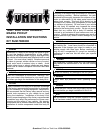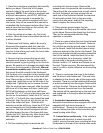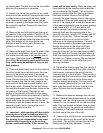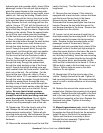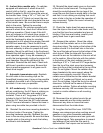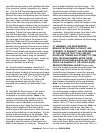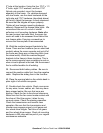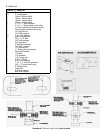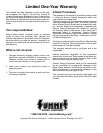Questions? Call our Tech Line 1-330-630-0240
2" hole at this location. Using the four 7/16" x 1 1/
2" bolts, eight 7/16" washers, and four 7/16"
Nylock nuts provided, mount the bumper
assembly to the frame. On vehicles equipped
with tow hooks, use the stock hardware on the
right side and 7/16" hardware (described above)
on the left. Adjust the bumper- to-body clearance.
Be sure that the tailgate will open properly.
Tighten all rear bumper mounting hardware
securely. Reconnect the license plate lights. We
recommend the use of Loctite® or similar
adhesive on all mounting hardware. Note: after
the rear bumper has been lifted, the spare tire
crank will need to be accessed from behind the
rear license plate. Carrying a screwdriver to
remove the license plate is recommended.
38. Weld the overload support brackets to the
frame. There are four locations (two on short bed
models) where the cross supports rest just off of
the frame and there are no mounting bolts (over
the wheel wells). Weld the overload support
brackets to the frame in these locations. This is
so the cross supports have something to rest on
when a load is placed in the bed. We recommend
that a certified welder do all welding.
39. Reconnect both battery cables. Be sure to
connect the positive cable first, then the negative
cable. Replace the airbag fuse in the fuse box.
40. Place the warning label on the vehicle dash in
plain sight of all vehicle occupants.
41. Double-check the vehicle. Check once more
for any wires, hoses, cables, etc. that may have
been missed earlier. Be sure that none are
binding. Check the fan-to-fan shroud clearance.
Make sure that the fan cannot make contact with
the shroud. Start the engine. Listen for any
unusual noises. Check the steering operation.
Check the transmission and transfer case
operation. Be sure that the transmission and
transfer case engage properly in all gears and
four wheel drive ranges. Test drive in all gears
and four wheel drive ranges. Check all mounting
hardware in 500 miles and as part of your regular
maintenance schedule.



